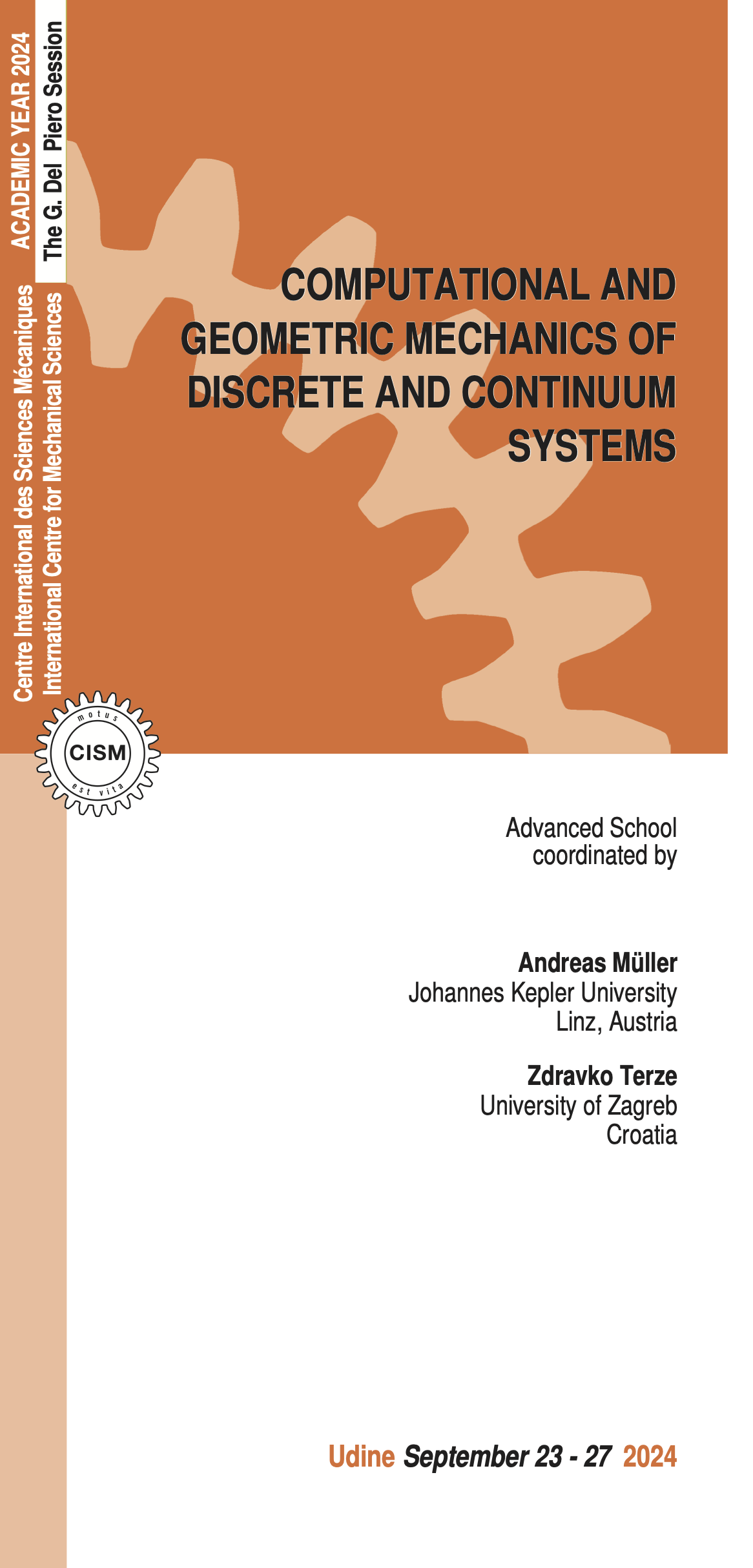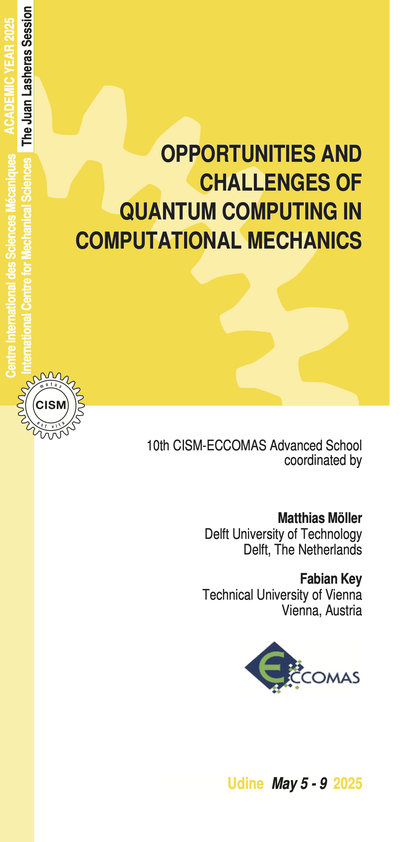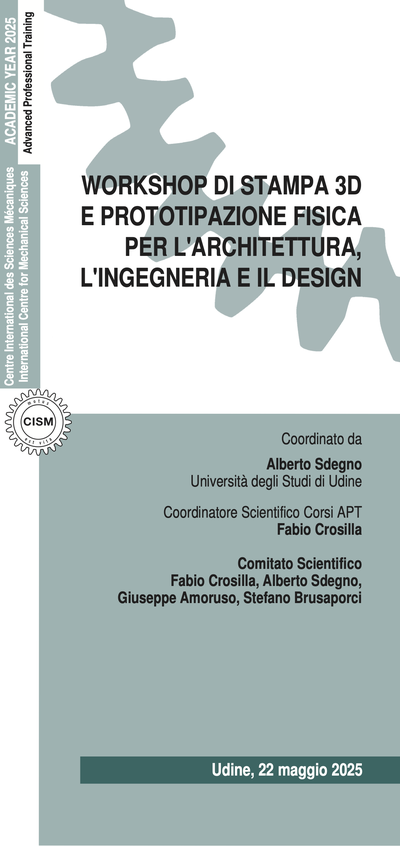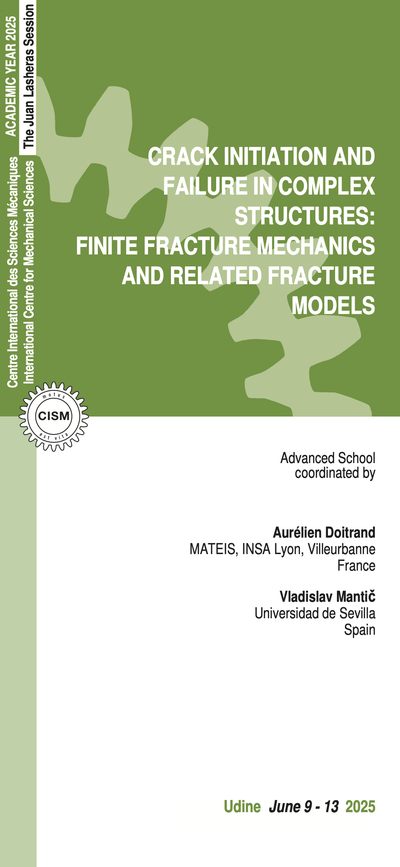Rising interest in non-holonomic mechanical systems has initiated a large body of research that exploits what is often called ‘non-holonomic’ geometry. More precisely the geometric setting is that of (principal) bundles, which serve as configuration space, and the connection on the bundle plays a key role as it encodes constituent kinematic and dynamic relations. This not only provides a beautiful holistic approach to multi-physical systems it also gives rise to consistent compact and efficient computational formulations for complex systems. Renewed interest in concepts from geometric mechanics for modelling and computation arises in various scientific and engineering communities. In robotics, geometric mechanics approaches have become a corner stone of what is sometimes called ‘modern robotics’, where Lie group formulations are now established for kinematics and dynamics modeling, and the bundle view is central for locomotion planning and control of floating-base systems, e.g. humanoids, legged robots, and space robots. Computational multibody dynamics is another area that has embraced geometric methods for the consistent modeling of constrained systems comprising rigid and flexible bodies, and also geometric integration schemes are now established for the numerical analysis of such systems. In the last decade, significant progress was made in the field of computational geometric approaches to discrete and continuous mechanical systems, in particular for the dynamics simulation and control of articulated rigid body systems, and of solid and fluid systems in a consistent geometric framework as well as fluid-structure interaction and particle methods.
Recently geometric modeling of discrete and continuous systems find their fruitful application also in the domain of artificial intelligence, where manifold learning, structure-preserving integration schemes, and computational Lie group formulations enhance efficiency and robustness of learning methods. Geometry based reduced-order modeling of complex systems, especially nonlinear dimensionality reduction techniques exploiting the topology of the underlying manifolds, provide new perspectives in this emerging field. Hybrid surrogate models of continuum and discrete systems, merging physics-based sub-models and data-driven representations, are combined to co-simulate complex mechanic and thermodynamic phenomena by incorporating the geometric structure of information manifolds. Contemporary machine learning algorithms start using methods originated from physics and statistical mechanics even on the conceptual level as geometrical structures and principles provide insight into formulations and algorithms used in artificial intelligence. This course will introduce attendees to fundamental concepts and mathematical formulations of geometric mechanics and provide a panoramic overview of current state of research and applications of geometric modeling. It covers theoretical and mathematical foundations, computational methods that allow for practical application to multibody system dynamics, as well as cutting-edge multidisciplinary research.
Terze, Z. et al. Reduced coupled flapping wing-fluid computational model with unsteady vortex wake. Nonlinear Dynamics 109, 975–987 (2022).
Müller, A., Terze, Z. (2014). Modelling and Integration Concepts of Multibody Systems on Lie Groups. In: Terze, Z. (eds) Multibody Dynamics. Computational Methods in Applied Sciences, Springer.
A. Müller: Screw and Lie group theory in multibody dynamics – Recursive algorithms and equations of motion of tree-topology systems, Multibody System Dynamics, 42(2), 2018, 219-248.
Andreas Müller: Hamel’s Equations and Geometric Mechanics of Constrained and Floating Multibody and Space Systems, Proceedings of the Royal Society A: Mathematical, Physical and Engineering Sciences, Vol. 479, 2023.
H. Goldstein, C. P. Poole, and J. L. Safko, Classical Mechanics, 3rd ed. Pearson, 2001. (Chapter 2: Variational principles and Lagrange's mechanics).
J. C. Simo and L. Vu-Quoc, “On the dynamics in space of rods undergoing large motions – A geometrically exact approach,” Computer Methods in Applied Mechanics and Engineering, vol. 66, no. 2, pp. 125 -161, 1988.
Z. Terze et al. Reduced coupled flapping wing-fluid computational model with unsteady vortex wake. Nonlinear Dynamics 109, 975–987, 2022.
A. Müller, Z. Terze, 2014. Modelling and Integration Concepts of Multibody Systems on Lie Groups. In: Z. Terze, (eds) Multibody Dynamics. Computational Methods in Applied Sciences, Springer.
A. Müller: Screw and Lie group theory in multibody dynamics – Recursive algorithms and equations of motion of tree-topology systems, Multibody System Dynamics, 42(2), 219-248, 2018.
A. Müller: Hamel’s Equations and Geometric Mechanics of Constrained and Floating Multibody and Space Systems, Proceedings of the Royal Society A: Mathematical, Physical and Engineering Sciences, Vol. 479, 2023.
H. Goldstein, C. P. Poole, and J. L. Safko, Classical Mechanics, 3rd ed. Pearson, 2001. (Chapter 2: Variational principles and Lagrange's mechanics).
J. C. Simo and L. Vu-Quoc, “On the dynamics in space of rods undergoing large motions – A geometrically exact approach,” Computer Methods in Applied Mechanics and Engineering, vol. 66, no. 2, pp. 125 -161, 1988.
G. de Saxcé and C.Vallée: “Galilean mechanics and thermodynamics of continua”, book series « Mechanical Engineering and Solid Mechanics », ISTE- Wiley, London (2016).
G. de Saxce: Symplectic and variational formulations of compressible and incompressible Navier-Stokes equation, arXiv:2306.04405v1
M. Anitescu, “Optimization-based simulation of nonsmooth rigid multibody dynamics,” Math. Program., 105(1):113–143, 2006.
D. Violeau and B.D. Rogers, “Smoothed particle hydrodynamics (SPH) for free-surface flows: past, present and future,” J. Hydraulic Research, 54(1):1-26, 2016.
7 lectures on: Modeling Cosserat media and applications, fundamentals of Cosserat rods using Lagrangian reduction on Lie groups, geometrically exact finite element method, new parametrization of Cosserat rods with strain fields, modelling, simulation and control of continuous and soft robots.
7 lectures on: The geometric modelling of continuum mechanics and thermodynamics, principle of relativity with Galileo symmetry group, principles of the thermodynamics in geometric form, symplectic and variational principles for dynamics of viscous fluids.
7 lectures on: Geometric foundations, Lie group formulations for the kinematics and dynamics of stationary and floating-base rigid body systems, computational formulations applied to legged/walking robots, mobile platforms, zero-gravity floating-base system (e.g. satellites, space robots).
7 lectures on: Particle methods and their applications, granular dynamics and fluid-solid interaction in a Lagrangian framework, large-scale granular flow problems with frictional contact, smooth and non-smooth contact formulation, numerical solution techniques, Smoothed Particle Hydrodynamics, applications to large-scale simulations in terramechanics, terrestrial and extra-terrestrial vehicles and robots.
7 lectures on: Geometric modelling of Euler and viscous fluid, dynamics of multibody systems and fluid-solid interaction in Lie group setting, coupled (‘multi-physics’) systems, structure-preserving integration schemes for Hamiltonian systems, applied to multibody systems immersed in fluid, aerospace case-studies, flapping-wing drones and locomotion systems.





